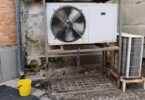aNewDomain’s Skewed News — Flight attendants for Alaska Air have filed a lawsuit against Boeing for allowing toxic air into the cabins of the airplanes it manufactures. According to the complaint, the air used to maintain cabin pressure gets sucked into the planes through the engines. When the air is exposed to heated engine oil, it becomes toxic.
If you travel on one of their planes, you’re breathing that shit, too.
“By reason of Boeing’s design decisions, the environmental control system on the subject aircraft lacked filters which would have purified the cabin air and prevented the subject flight attendant crew from being exposed to toxic fumes,” the lawsuit says.
Any of several design changes could help fix the problem, including air filters, better pressure bearing seals to prevent leaks, or separate air compressors that don’t route cabin air through the engine. We know that Boeing can avoid contamination if they want to, because they already have.
Boeing engineers have designed a “bleedless” air system for their 787 Dreamliner, even bragging on their own self-propaganda website about how that particular model provides “cleaner, healthier air.”
 Boeing has apparently determined, in the cold wisdom of the marketplace, that the health and lives of most of their airplanes’ crew and passengers are worth less than whatever costs might be incurred from ensuring the cabin air in the rest of their planes isn’t poisonous.
Boeing has apparently determined, in the cold wisdom of the marketplace, that the health and lives of most of their airplanes’ crew and passengers are worth less than whatever costs might be incurred from ensuring the cabin air in the rest of their planes isn’t poisonous.
How much would it cost to add these simple safety features to all the planes?
Could it possibly cost more than $90.8 billion? That’s how much revenue Boeing raked in last year. If that isn’t enough, maybe Boeing CEO James McNerney could kick in a little something, too. He gets paid $23.2 million a year.
Boeing refused to respond to press requests for comment.
Toxic cabin air isn’t exactly a new issue. Back in 1953 Boeing initiated an oil filter development program to keep toxic fumes out of the cabin. But it never bothered to complete it or even analyze the composition or effects of the poisonous compounds that are being allowed in for people to breathe, nor did they install sensors to detect their presence.
As for the flight attendants who filed the recent lawsuit, they claimed the toxic fumes made them feel dizzy, pass out, vomit and speak incoherently.
“I remember walking down the aisle and just gripping the seatbacks because I felt like I was going to fall over,” Vanessa Woods told the press.
“The next thing I know, I was on the galley floor, looking up at Faye who was paging for assistance,” she continued. “She was mumbling incoherently into the PA system. It was beyond frightening.”
Four flight attendants say they’re suffering from long-term medical problems, including memory issues, tremors, blinding headaches, fatigue, gastrointestinal problems and depression.
Read the lawsuit here.
For aNewDomain, I’m Stephanie McMillan.













Revenue doesnt = profits….it disingenuous at best to state a revenue figure in an article such as this just for effect.